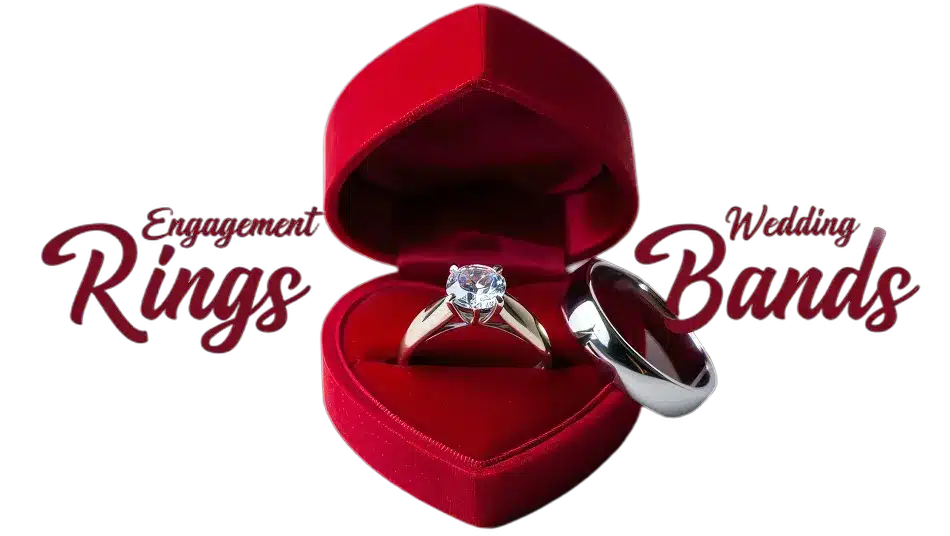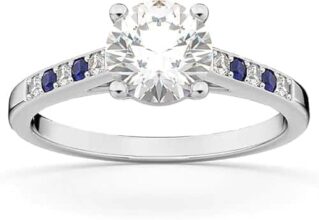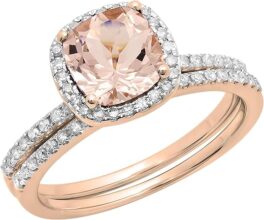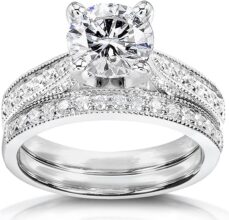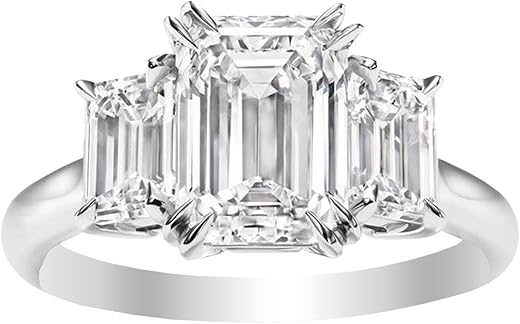
Welcome to the World of Lab-Grown Diamonds
Step into the sparkling realm of lab-grown diamonds, where luxury meets conscience. As you explore this fascinating trend, you’ll discover how these shimmering stones differ from their natural counterparts. Lab-grown diamonds are not just beautiful; they represent a more ethical choice for your jewelry collection.
In this article, you will uncover the fundamental differences between natural and lab-grown diamonds. You’ll learn about the innovative processes that create these gems in a controlled environment, making them both stunning and sustainable.
We’ll also dive into the ethical and environmental benefits that make lab-grown diamonds a guilt-free luxury. Plus, we’ll discuss their quality, value, and whether they are worth your investment. Finally, we’ll guide you through tips for choosing the perfect lab-grown diamond that speaks to your personal style. Let’s embark on this journey together and illuminate the brilliance of lab-grown diamonds!



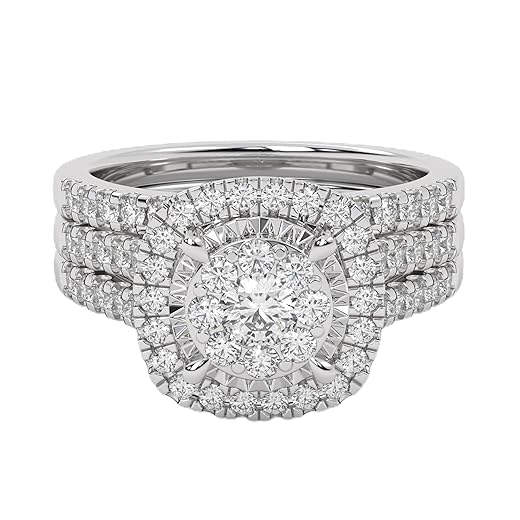
Understanding Diamonds: Natural vs. Lab-Grown
When it comes to diamonds, there’s more to their beauty than meets the eye. At their core, both natural and lab-grown diamonds share a common element: carbon. However, the paths they take to reach your jewelry box are vastly different.
The Natural Journey of Diamonds
Natural diamonds are formed deep within the Earth over millions of years, subjected to intense pressure and heat. This geological process can take anywhere from one to three billion years! As carbon atoms bond together in a crystal structure, they create the sparkling gems you’re familiar with. Each natural diamond carries a unique story dictated by the conditions under which it was formed, and it’s this history that many people treasure.
The Lab-Grown Revolution
On the other hand, lab-grown diamonds, also known as synthetic diamonds, are created in a fraction of the time. Achieved through advanced technology, these diamonds are produced using two primary techniques: High Pressure High Temperature (HPHT) and Chemical Vapor Deposition (CVD).
Both methods yield diamonds that are chemically and physically identical to natural diamonds. You could place a lab-grown diamond next to its mined counterpart and notice no difference; each exhibits the same brilliance and clarity.
What You Need to Know
Regardless of their origin, lab-grown diamonds and natural diamonds both undergo grading by the same standards, considering factors like cut, color, clarity, and carat weight. That said, the love for natural diamonds often comes from emotional narratives and the allure of their rarity. Meanwhile, lab-grown diamonds shine in the spotlight for their modern production process, transparency, and affordability.
This advancement in diamond technology has made stunning creations more accessible than ever, allowing you to make informed decisions that align with your values.
As you delve deeper into this captivating world, you’ll soon learn how lab-grown diamonds are shaping a new narrative in jewelry—one that combines ethical considerations with brilliance and beauty. Get ready to explore the exciting creation process behind these magnificent stones next!
The Creation Process of Lab-Grown Diamonds
Exploring the creation of lab-grown diamonds reveals an intriguing blend of science, technology, and artistry. Unlike their natural counterparts, which form over eons deep within the Earth, lab-grown diamonds come to life through two primary methods: High Pressure High Temperature (HPHT) and Chemical Vapor Deposition (CVD). Let’s break down each process to better understand the craftsmanship behind these modern marvels.
High Pressure High Temperature (HPHT)
HPHT is a fascinating method that essentially replicates the earth’s natural diamond formation conditions. In a specially designed apparatus, carbon is subjected to extreme pressure (around 1.5 million pounds per square inch) and high temperatures (approximately 2,500 degrees Fahrenheit).
Imagine this: just as a chef combines the right ingredients to bake the perfect cake, manufacturers introduce a seed crystal and carbon source into the HPHT chamber. Under these intense conditions, the carbon atoms align and solidify into diamond crystals, creating a gem that could easily rival any mined diamond.
This method not only produces diamonds rapidly but also allows for unique colors and characteristics to emerge, catering to various aesthetic preferences.
Chemical Vapor Deposition (CVD)
On the other hand, CVD offers a different approach, showcasing the versatility of modern technology. In this process, scientists utilize a low-pressure chamber filled with a gas mixture, typically containing hydrogen and methane. Through a process known as plasma activation, the gases break down, and carbon atoms begin to deposit onto a substrate, gradually forming a diamond layer.
Picture a layered cake being crafted slice by slice—CVD grows diamonds atom by atom, allowing for exceptional control over diamond quality. This precision results in remarkable gems that can exhibit impressive clarity and size, delivering a tailored experience to each diamond enthusiast.
Technological Innovation at Its Finest
Both HPHT and CVD methods showcase the incredible advancements in diamond technology and highlight the craftsmanship behind lab-grown diamonds. Each diamond produced is a testament to innovation, reflecting a commitment to ethical practices and sustainability. You might even find it fascinating that many jewelers now incorporate lab-grown diamonds into custom designs, making them not just sustainable alternatives but also profoundly personal gifts.
The blend of these cutting-edge processes paves the way for remarkable choices in your jewelry collection. As we dive deeper into the benefits of lab-grown diamonds—particularly their ethical and environmental impacts—you’ll see how choosing one can be both a brilliant and responsible decision, enhancing your experience of luxury without the guilt.
Ethical and Environmental Benefits
When it comes to making thoughtful purchases, the ethics behind your choices matter now more than ever. By opting for lab-grown diamonds instead of mined ones, you are not just choosing a stunning piece of jewelry; you’re also endorsing a significant shift towards more sustainable and fair practices in the gemstone industry.
Minimal Environmental Impact
Traditional diamond mining is notorious for its harmful environmental effects. It often leads to deforestation, soil erosion, and water pollution. In contrast, lab-grown diamonds are produced in a controlled environment, dramatically reducing the ecological footprint. Here are a few benefits that highlight this difference:
Fair Labor Practices
One of the most troubling aspects of traditional diamond mining is the exploitation of labor. Many miners work under harsh conditions for meager pay, often in regions plagued by conflict and instability. Lab-grown diamonds offer a clear conscience with a commitment to ethical labor practices:
Personalized Peace of Mind
Every time you wear or gift a lab-grown diamond, you’re making a statement. It’s not just about beauty; it’s about choosing a product that aligns with your values. Picture this: when a friend admires your engagement ring or pendant, you can share how your beautiful choice also supports sustainable practices and fair labor. It’s a conversation piece with impact!
As you explore the vibrant world of lab-grown diamonds, their ethical and environmental advantages shine brightly. This knowledge not only enhances your appreciation of these gems but also connects you to a larger movement toward responsible consumerism. Next, we will delve into the quality and value of lab-grown diamonds, tackling whether these exquisite stones are truly worth the investment.
Quality and Value: Are They Worth It?
As you consider adding a sparkling lab-grown diamond to your collection, you might be curious about how they stack up against natural diamonds in terms of quality and pricing. Good news! Lab-grown diamonds frequently outperform their natural counterparts in both areas, making them an attractive option for many buyers.
Understanding Diamond Grading
Diamonds, whether natural or lab-grown, are evaluated using the Four Cs: cut, color, clarity, and carat weight. These grading criteria are set by the Gemological Institute of America (GIA) and universally apply to all diamonds. Since lab-grown diamonds are created in controlled environments, they often boast remarkable quality metrics:
This level of quality assurance results in stunning gems that often sparkle just as brilliantly as high-end mined diamonds, if not more!
Quality Assurance Process
The creation of lab-grown diamonds involves sophisticated technology and stringent quality controls. Both HPHT and CVD processes utilize advanced techniques to ensure well-formed crystals. Upon completion, each diamond is meticulously graded, and certificates are often provided by reputable gemological labs, giving you peace of mind regarding your purchase. In this way, you can rest assured that the diamond you choose is of the highest standard, perfectly suited for the occasion.
Price Comparison: Affordability Factor
One of the most compelling advantages of lab-grown diamonds is their value proposition. Generally, prices for lab-grown diamonds are significantly lower—often 20-40% less—compared to mined diamonds. For example, if you’re considering a one-carat diamond, the price tag on a comparable lab-grown version could range from $2,000 to $4,000, while a natural diamond of similar quality might set you back $5,000 or more.
Imagine the added flexibility this affords you. You could even explore other precious stones or metals to enhance your jewelry collection!
Informed Decision-Making
With the price advantage alongside impeccable quality, choosing a lab-grown diamond can be a straightforward decision, especially if you prioritize both beauty and value. As you weigh your options, consider how a lab-grown diamond not only meets your aesthetic desires but also aligns with your budgeting goals.
As you move forward in your search for the perfect lab-grown diamond, it’s essential to think about how you want to express your style. In the next section, we’ll discuss some tips for choosing your perfect lab-grown diamond, ensuring you find the right piece to embody your unique taste and story.
Choosing Your Perfect Lab-Grown Diamond
Now that you’re familiar with the incredible creation processes and benefits of lab-grown diamonds, let’s discuss how to find the one that truly resonates with you. Selecting a diamond can feel overwhelming, but understanding the Four Cs—carat weight, cut, color, and clarity—will help you make an informed decision.
The Four Cs
Carat Weight
Carat weight refers to the size of the diamond. A one-carat diamond weighs 200 milligrams and is a popular choice for engagement rings. However, bigger isn’t always better. Assess what feels right for you; some may prefer a slightly smaller carat that looks larger due to an exceptional cut.
Cut
The cut is arguably the most crucial aspect of a diamond’s appeal. It determines how well the diamond reflects light, impacting its overall sparkle. Look for cuts graded as “Ideal” or “Excellent” to ensure you get maximum brilliance. Common shapes include round, princess, and emerald—pick the one that complements your style! Picture the difference: a well-cut diamond glimmers like a star, while a poorly cut one may lack the same liveliness.
Color
Lab-grown diamonds often boast near-colorless properties, scoring high on the GIA scale (D to Z, with D being completely colorless). Aim for a diamond in the G to J range for a beautiful look that won’t break the bank. Keep in mind that color is often best observed in larger diamonds; thus, it can be subjective. If possible, view several diamonds side by side to see which color shade appeals to you most.
Clarity
Clarity measures the presence of internal or external flaws, known as inclusions or blemishes. Lab-grown diamonds frequently achieve impressive clarity grades, with many classified as “Eye-Clean,” meaning they appear perfect to the unaided eye. If you’re aiming for a flawless look, seek diamonds rated VS1 or VS2, which indicate very slight inclusions, virtually invisible without magnification.
Final Tips for Your Selection
By keeping these tips in mind, you’re well on your way to finding a lab-grown diamond that captures your heart and suits your style. The decision you make not only reflects your taste but also embraces a more ethical approach to luxury. With a keen understanding of the Four Cs and thoughtful selection, you can confidently choose a diamond that truly shines, both literally and figuratively.
In the next section, we’ll explore how embracing lab-grown diamonds allows you to celebrate the beauty of your choice while staying rooted in meaningful values.
Embrace the Sparkle of Lab-Grown Diamonds
As you conclude your exploration of lab-grown diamonds, you can appreciate their stunning beauty without the guilt often associated with traditional mining practices. These modern marvels not only dazzle with their brilliance but also come with a commitment to ethical sourcing and environmental responsibility. By choosing a lab-grown diamond, you’re making a statement that you value both luxury and integrity.
So, whether it’s for an engagement ring, a special gift, or simply a token of self-love, consider embracing the sparkle of lab-grown diamonds. It’s a choice that reflects your values while celebrating life’s precious moments. Make your next jewelry purchase not just beautiful, but meaningful.
